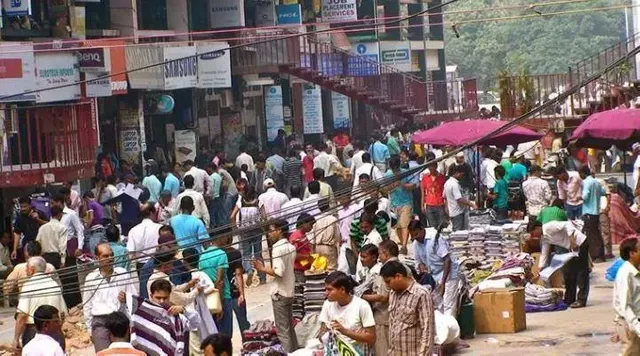In China Market: ‘Want to sell Indian goods but where are they?’

With 60,000 returning migrants, and a Covid count touching 500, the district is also the focus of a month-long assignment by The Indian Express to track how lives and livelihoods in smalltown India are coping with the unlockdown.
The signs of economic distress are obvious. It’s the city’s oldest “big hotel”, and at 4 pm on a weekday, with offices and markets nearby, the restaurant of Hotel Rajhans is empty. There are only two waiters, both watching Prime Minister Narendra Modi announce more free ration for the poor. As the speech ends, the overwhelming feeling is of relief — and a little disappointment.
Relief, says Sonu Kumar, one of the two waiters, because “he did not announce another lockdown”. And disappointment, because he was waiting for the Prime Minister to tell the country about what was happening on the border with China. “I don’t mean a ban on goods, because that would mean more losses, but he should have at least mentioned China, no?” he asks.
Bhagalpur aspires to become one of the four “Smart Cities” in Bihar, with markets that sell mobile phones and plastic trinkets, flatscreen TVs and silk sarees. Here, traders back the government in its economic offensive against China. But, with an important caveat: the government must provide options that will not sink the local economy.
With 60,000 returning migrants, and a Covid count touching 500, the district is also the focus of a month-long assignment by The Indian Express to track how lives and livelihoods in smalltown India are coping with the unlockdown.
The flavour of the week, though, is China. Or rather, China Market, opposite the Bhagalpur railway station. Its small shops sell cheap electronic equipment, most of it sourced from China. There is a torch that sells for
Rs 230, an emergency light for Rs 150, plastic bats, toys. But there are no customers.
“China killed 20 of our soldiers on the border, we are with the government. Who doesn’t want to sell Indian goods? But are there any in the market? Give us an alternative,” says Manish Sah, a shopkeeper.
“Our business has fallen over 90 per cent. Much of the market revolved around the railway station, and since that is shut, except for one train, everything is gone. If the government bans Chinese items without giving us any other options, where will we go?” asks another shopkeeper, who does not wish to be named.
As for those clamouring for war, there is a word of caution outside the district soldiers welfare office, about 3 km away. And the man voicing it is Honorary Naib Subedar Yogendra Mandal, who spent 24 years in the Indian Army, serving in 10 Bihar and 14 Bihar. He spent four years in Ladakh, over two terms, and is one of the nearly 6,000 ex-servicemen from Bhagalpur district.
That’s not all. Both his sons are also in the Indian Army and, he says, one of them is being moved to Galwan Valley, the site of the violent face-off with China two weeks ago.
Ravi Shankar Prasad: ‘Dependence on foreign apps which have agenda must stop’
“I know how difficult the terrain is. I was posted about 110 km from Leh… There was a place called the Three Sisters mountain where you could see China. It used to be so cold that our food was never warm, and we had no appetite,” Mandal recalls.
The news of the border deaths shook him. “So far, what we have said and done in response is okay, but more must follow. I am sure that Modi is looking for the right time and opportunity,” he says.
Mandal warns, though, that the cost of war is terrible. “Our economic situation and theirs will both be damaged, our lives and their lives will both be lost. Perhaps, first, we can try and solve it without bullets,” he says.
That’s the hope across the markets of Bhagalpur, including the Khalifabagh bazar where Chinese phones are neatly packed in polythene, and business has picked up in the last two weeks since the return of migrant workers. At every corner is a shop that sells electronics, or a mobile phone, with billboards of Vivo, Xiaomi or Oppo.
Says the local distributor of a Chinese smartphone brand: “In Eastern Bihar, we usually sell as many as 15,000 phones a month. Combine that with the two other Chinese brands, that’s above 60 per cent of the market.” But over the past month, as the rhetoric against China and for “Make in India” has grown, he has been scouring the market for opportunities, to no avail.
“If they ban these phones, like they did Tiktok, the first thing that will happen is that 22 Indians that work in this office will lose their jobs. Then, the Indians that work in the company’s factories in India will lose their jobs,” he says.
On his table is a new sticker: Below the name of the Chinese brand, it says “Make in India” with a logo that has the Taj Mahal, a peacock, the IPL symbol, the Make-in-India lion, and a lotus.